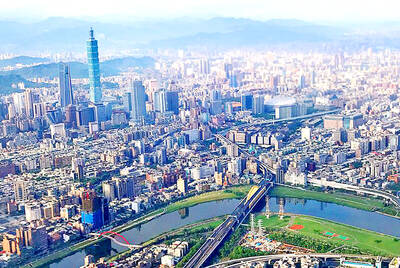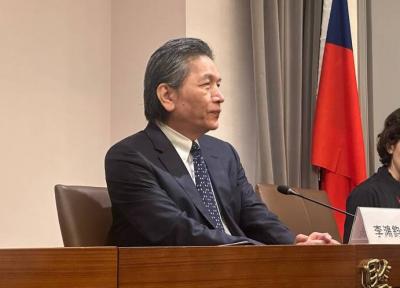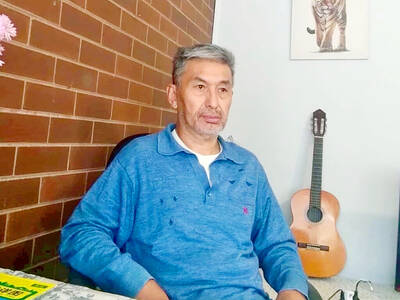Taiwan could be the place from which all Austronesian peoples originated, Academia Sinica vice-president Liu Tsui-jung (劉翠溶) said yesterday, citing the results of research conducted over the past decades.
Liu made the remark during a keynote speech at the opening of a conference on issues concerning indigenous peoples worldwide organized by the International Geographical Union.
The conference, which opened in Taipei yesterday, will continue through Saturday.
The Austronesian family refers to indigenous peoples found in a region that stretches "from Taiwan in the north to New Zealand in the south, and from Easter Island in the east to Madagascar in the west," Liu said, adding that this excludes indigenous people in Australia.
For a long time, academics have attempted to trace the origin of Austronesian peoples through linguistic, anthropologist and archaeological research, and had raised several theories, Liu said.
Theories include the Indo-China Peninsula as the origin, southern China as well as the southeast coast of the Asian continent, Liu said.
Although Taiwan was first considered as a possible origin of the Austronesian peoples in 1965, it was not until 10 years later that the theory was taken seriously.
"In 1975, archeologist Richard Shutler and linguist Jeffrey Marck ... contended that archeological and linguistic evidence demonstrated that cord-marked pottery found in Taiwan from around 9000BC to 2500BC represented the earliest Austronesian community," Liu said. "Taiwan was thus the earliest homeland of the Austronesian people."
Advanced biotechnology allowed a team from New Zealand to conduct DNA tests on New Zealand Maoris in 1998.
"[The] finding reveals that Maori ancestors came originally from Taiwan and confirms Maori beliefs about their origins," Liu said.
DNA tests of 640 Taiwanese Aborigines by the Transfusion Medicine Laboratory at Mackay Memorial Hospital in 2005 also showed that "Taiwanese Aboriginal populations are more closely related to Southeast Asian island populations than to those from mainland East Asia," overturning earlier continental origin theories, Liu said.
In addition to Liu's keynote speech, relations between the state and its Aboriginal populations, as well as Taiwan's Aboriginal cultural and knowledge systems, were also explored by academics in essays presented at the conference.

Taipei has once again made it to the top 100 in Oxford Economics’ Global Cities Index 2025 report, moving up five places from last year to 60. The annual index, which was published last month, evaluated 1,000 of the most populated metropolises based on five indices — economics, human capital, quality of life, environment and governance. New York maintained its top spot this year, placing first in the economics index thanks to the strength of its vibrant financial industry and economic stability. Taipei ranked 263rd in economics, 44th in human capital, 15th in quality of life, 284th for environment and 75th in governance,

The Sports Administration yesterday demanded an apology from the national table tennis association for barring 17-year-old Yeh Yi-tian (葉伊恬) from competing in the upcoming World Table Tennis (WTT) United States Smash tournament in Las Vegas this July. The sports agency said in a statement that the Chinese Taipei Table Tennis Association (CTTTA) must explain to the public why it withdrew Yeh from the WTT tournament in Las Vegas. The sports agency said it contacted the association to express its disapproval of the decision-making process after receiving a complaint from Yeh’s coach, Chuang

Control Yuan Secretary-General Lee Chun-yi (李俊俋) tendered his resignation last night, admitting that he had misused a government vehicle, as reported by media. His resignation was immediately accepted by the Control Yuan. In a statement explaining why he had resigned, Lee apologized for using a Control Yuan vehicle to transport his dog to a pet grooming salon on May 20. The issue first came to light late last month, when TVBS News reported that Lee had instructed his driver to take the dog to the salon. The news channel broadcast photos that it said were taken by an unnamed whistle-blower, which purportedly showed the

A former officer in China’s People’s Liberation Army (PLA) who witnessed the aftermath of the 1989 Tiananmen Square massacre has warned that Taiwan could face a similar fate if China attempts to unify the country by force. Li Xiaoming (李曉明), who was deployed to Beijing as a junior officer during the crackdown, said Taiwanese people should study the massacre carefully, because it offers a glimpse of what Beijing is willing to do to suppress dissent. “What happened in Tiananmen Square could happen in Taiwan too,” Li told CNA in a May 22 interview, ahead of the massacre’s 36th anniversary. “If Taiwanese students or